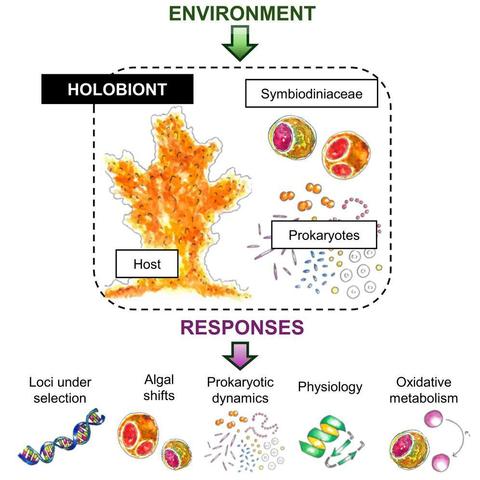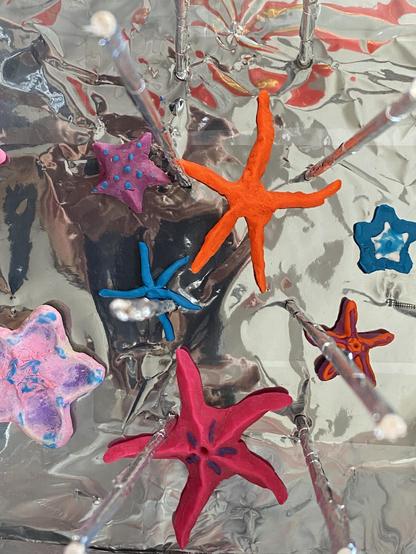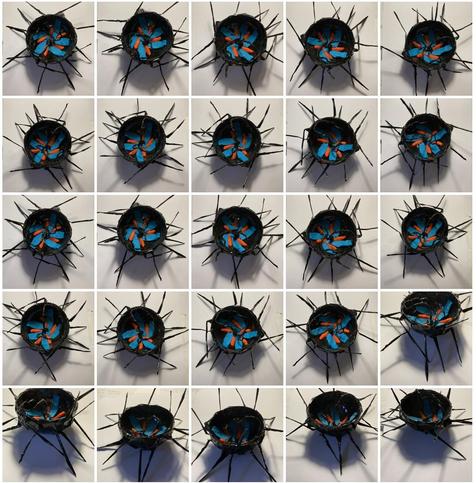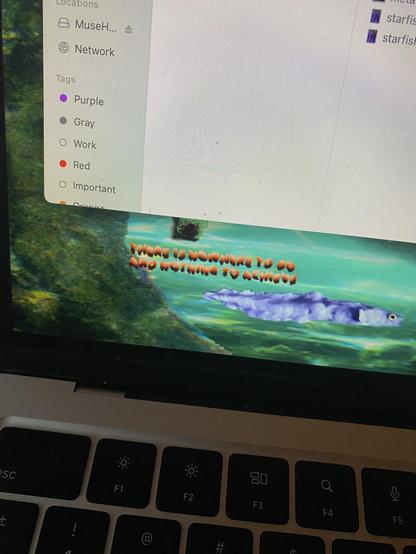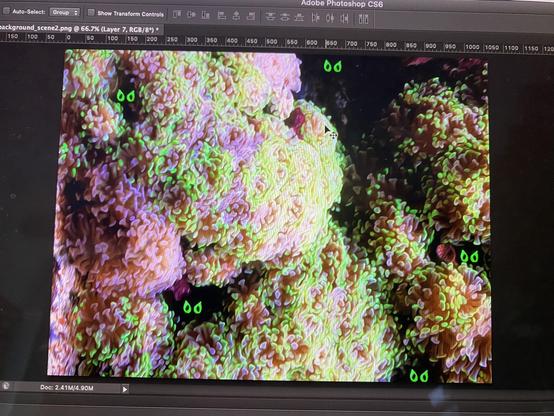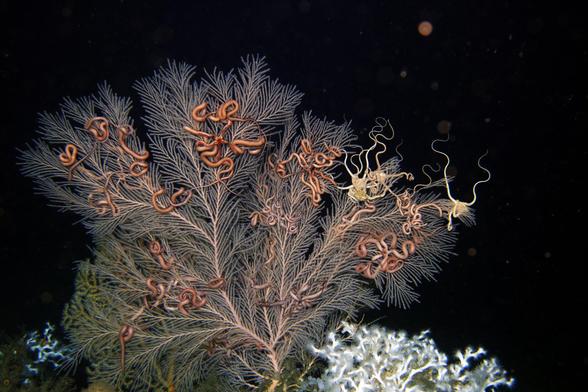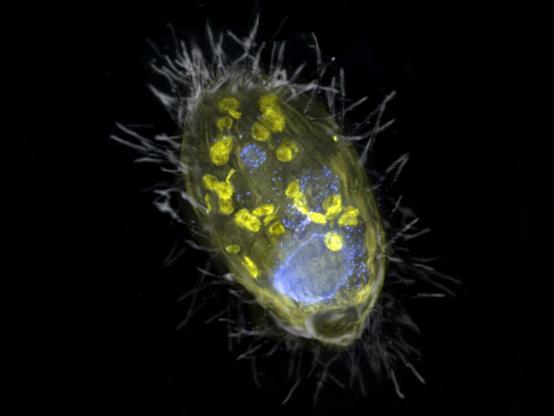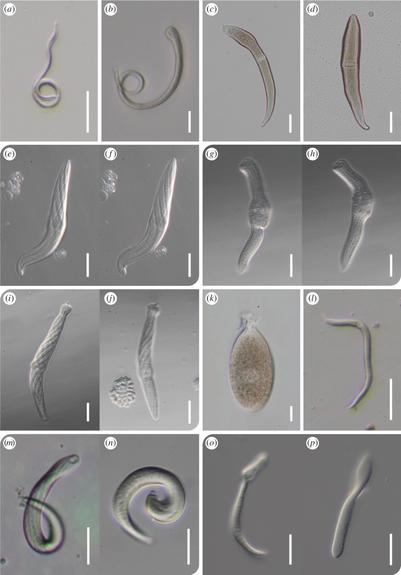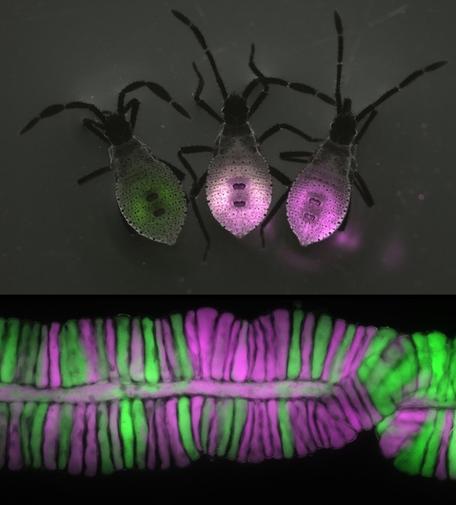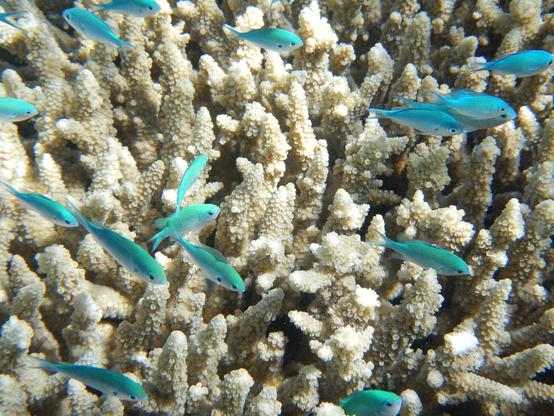The role of holobiont composition and environmental history in thermotolerance of Tropical Eastern Pacific corals #coral #holobiont #symbionts https://www.sciencedirect.com/science/article/pii/S0960982225006517
#Symbionts
Orchid's nutrient theft from #fungi sheds light on photosynthesis-parasitism continuum https://phys.org/news/2025-02-orchid-nutrient-theft-fungi-photosynthesis.html paper: https://onlinelibrary.wiley.com/doi/10.1111/tpj.70045
"When the #orchid Oreorchis patens happens to grow close to rotten wood, it shifts its fungal #symbionts to those that decompose the wood and significantly increases the amount of nutrients it takes from them—without ceasing to employ photosynthesis. As a result, the #plants are bigger and produce more #flowers."
this is the trailer for « sunken », coming out soon - a handcrafted underwater refuge on the web, where you soon will all be welcome to dive!
#scenographyasahost #virtualaltar #deepdiving #ecologywithoutnature #staywiththetrouble #coral
#fondsdaku #symbionts #troubledwater #blackhole #starfish #scubadiving #seaurchin #spongeworld #raylib #claymation #underwaterexperiments #thisistheafterlife #sunken
soon « sunken » is out — a project rasmus, simon and i worked on for a looong time — it’s an « immersive poetic point-and-click » — born out of the research « scenography as a host », exploring parasitic and symbiotic interactions with scenography — a virtual altar inhabited by spiky sea urchins and soft sponges — releasing the trailer tomorrow — stay put !!!
@Ap_iazu
@rhoeberg
#scenographyasahost
#spongeworld
#scubadiving
#starfish #seaurchin #symbionts
#raylib #troubledwater #blackhole
Leaf beetles' evolutionary success linked to gene transfer and symbiosis https://phys.org/news/2025-01-leaf-beetles-evolutionary-success-linked.html
"Almost all #LeafBeetles have incorporated foreign genetic material into their genome, which is responsible for the production of #enzymes necessary to digest plant cell wall components... half of the species of leaf #beetles live in close association with symbiotic #bacteria. These #symbionts provide the beetles with important digestive enzymes, vitamins, and amino acids."
#DeepSea corals are home to previously unknown #bacteria with extremely small genomes https://phys.org/news/2024-11-deep-sea-corals-home-previously.html paper: https://www.nature.com/articles/s41467-024-53855-5 #genomics
"the bacteria are the dominant #symbionts of these #corals and live in a gelatinous layer of tissue that forms part of their immune system and transports nutrients... These bacteria don't even carry genes for obtaining energy from carbohydrates... their only source of energy is the amino acid #arginine, provided by the #coral."
Advanced genetic techniques and #microscopy offer new insights into anaerobic ciliate and methanogen #symbiosis https://phys.org/news/2024-10-advanced-genetic-techniques-microscopy-insights.html
Methanogenic #symbionts of anaerobic #ciliates are host and habitat specific https://academic.oup.com/ismej/article/18/1/wrae164/7737421 #ISEPpapers by @joro
"This study provides a clearer understanding of how anaerobic ciliates have evolved a mix transmission mode to both maintain and replace their symbionts over time"
#microbes #protists #bacteria #archaea #methanogenesis #biology
Scientists discover more #mitochondria-like #symbionts with surprising metabolic capacities https://phys.org/news/2024-12-scientists-mitochondria-symbionts-metabolic-capacities.html
Genetic potential for aerobic respiration and #denitrification in globally distributed respiratory #endosymbionts https://www.nature.com/articles/s41467-024-54047-x
"They found a unique #bacterium that lives inside a ciliate (#protists) and provides it with energy... reminiscent of #mitochondria, with the key difference that the #endosymbiont derives energy from the respiration of nitrate, not oxygen."
New #ISEPpapers! Phylogenomic diversity of archigregarine apicomplexans https://royalsocietypublishing.org/doi/full/10.1098/rsob.240141
"#Gregarines are a large and diverse subgroup of #Apicomplexa, a lineage of obligate animal #symbionts including pathogens such as #Plasmodium, the #malaria parasite. Unlike Plasmodium, however, gregarines are poorly studied, despite the fact that as early-branching #apicomplexans they are crucial to our understanding of the origin and evolution of all apicomplexans and their parasitic lifestyle."
New #ISEPpapers! Updated classification of the phylum Parabasalia https://onlinelibrary.wiley.com/doi/full/10.1111/jeu.13035
"Most are harmless or beneficial gut #symbionts of #animals, but some have turned into #parasites in other body compartments, the most notorious example being #Trichomonas vaginalis in humans."
New #ISEPpapers! Divergent marine anaerobic #ciliates harbor closely related Methanocorpusculum endosymbionts https://academic.oup.com/ismej/article/18/1/wrae125/7710178 #protists #microbes #symbiosis by @joro
"marine ciliates from both of these co-occurring, divergent groups harbor closely related yet distinct intracellular #archaea within the Methanocorpusculum genus. The #symbionts appear to be stable at the host species level, but at higher taxonomic levels, there is evidence that #symbiont replacements have occurred."
Lichen partnerships challenged by changes in the Northwoods https://phys.org/news/2024-06-lichen-partnerships-northwoods.html
#Symbionts out of sync: Decoupled physiological responses are widespread, ecologically important in #lichen associations https://www.science.org/doi/10.1126/sciadv.ado2783 by Abigail Meyer et al.
"The partners are not always in sync—one may have an extreme response to changes in moisture while its partner remains unaffected... These differences may drive one partner to go it alone, disrupting the #symbiosis... like observed in #corals"
Giant deep-sea tubeworm #symbionts use 2 carbon fixation pathways to grow at record speeds
https://phys.org/news/2024-06-giant-deep-sea-vent-tubeworm.html
Jessica Mitchell et al.: Co-expression analysis reveals distinct alliances around two carbon fixation pathways in #hydrothermal vent symbionts https://www.nature.com/articles/s41564-024-01704-y
"#CarbonFixation is the process of converting #CarbonDioxide to sugars - the primary process that keeps our #biosphere running... In the #DeepSea, #Riftia's symbionts use energy from hydrogen sulfide to fix #carbon."
Researchers solve 2,000-year-old mystery of the destructive shipworm https://phys.org/news/2024-06-year-mystery-destructive-shipworm.html
First report of microbial #symbionts in the digestive system of #shipworms; wood boring mollusks https://www.sciencedirect.com/science/article/pii/S0964830524000878
"a population of symbiotic #microbes, living in an overlooked sub-organ of the gut called the #typhlosole, have the ability to secrete the #enzymes needed to digest #lignin—the toughest part of wood."
Study of #SquashBug colonization by #bacterial #symbionts shows that heterogeneity & strain diversity in symbiotic microbial communities, within- & between-host, can be explained by stochastic colonization @thyreodon @NicoleGerardo @nicvega1 #PLOSBiology https://plos.io/4dceo21
Two new #FreshwaterFungi species in China enhance #biodiversity knowledge https://phys.org/news/2024-02-freshwater-fungi-species-china-biodiversity.html paper: https://mycokeys.pensoft.net/article/115209/
"Freshwater #fungi are highly diverse and frequently reported from submerged wood, #freshwater insects, herbaceous substrates, sediments, leaves, foams, and living plants. Most species are well-known as #saprobes and they play an important role in ecological functioning as decomposers, but also can be #pathogens as well as #symbionts on humans and #plants."
New #Protists Described in 2023 https://www.isep-protists.com/post/new-protists-described-in-2023
From #termite #symbionts with rotating heads to #amoeboid #cactus-dwellers, from cannibalistic ex-#algae to #ciliates thriving in saturated brine, 2023 brought us numerous new discoveries of weird and wonderful #microbial #eukaryotes. Let's explore some of the most interesting finds in this end of year recapitulation.
The #metabolism of #bacteria: New method reveals #host #microbe interactions.
#symbionts #MALDI_MS #metabolites
https://phys.org/news/2023-11-metabolism-bacteria-method-reveals-host-microbe.html
Adult #coral can handle more heat and keep growing thanks to #heat-#evolved #symbionts.
https://phys.org/news/2023-11-adult-coral-heat-evolved-symbionts.html
Adult #coral can handle more heat and keep growing thanks to heat-evolved symbionts https://phys.org/news/2023-11-adult-coral-heat-evolved-symbionts.html paper: https://onlinelibrary.wiley.com/doi/10.1111/gcb.16987
"The #algae used in this study had their heat tolerance bolstered in the lab by exposing multiple generations to elevated temperatures for 10 years... the #symbionts were able to maintain a #symbiosis with adult #corals for two years, promoting faster coral recovery from #CoralBleaching and enhancing their #HeatTolerance without trading off on growth."
